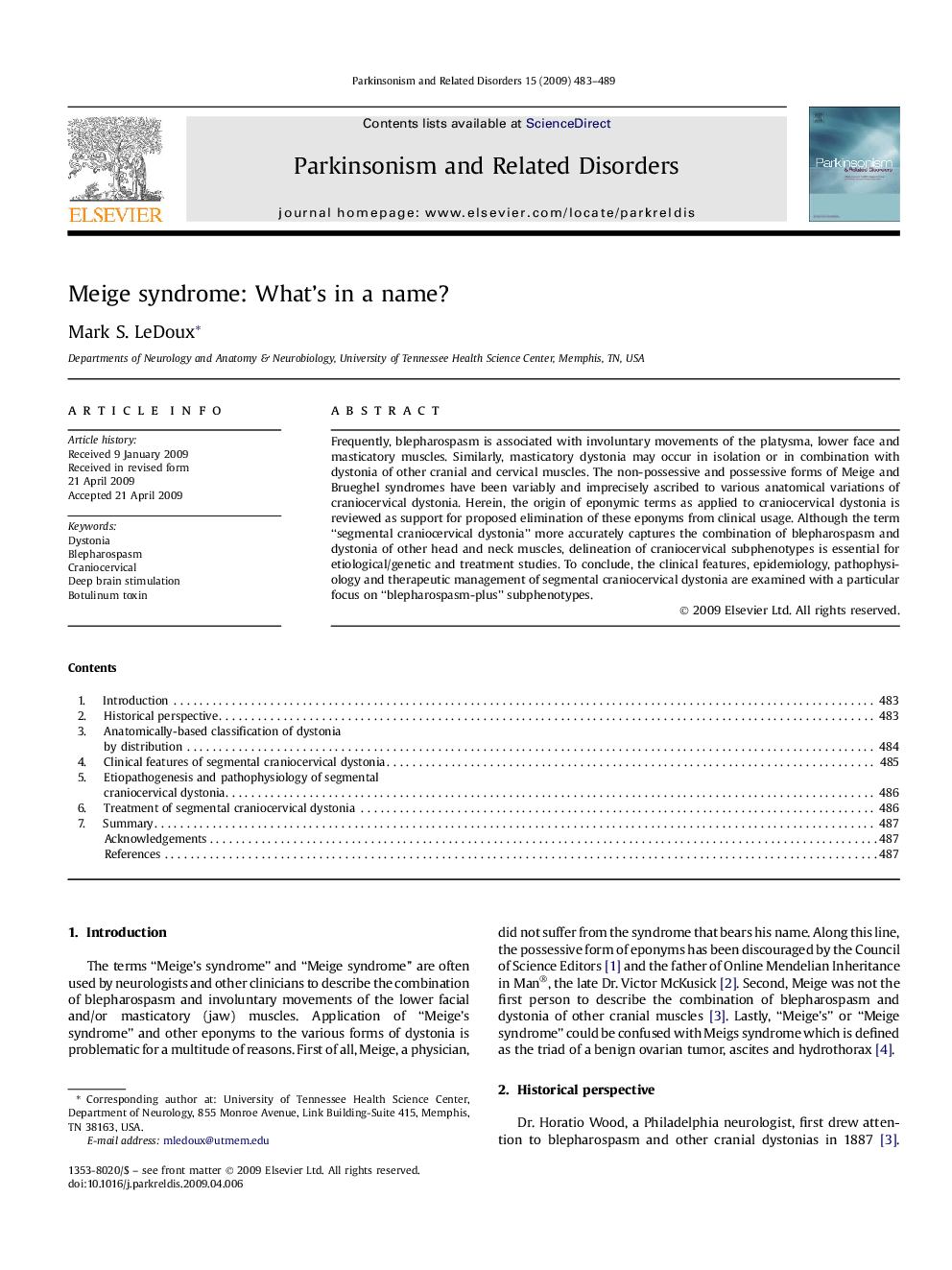| Article ID | Journal | Published Year | Pages | File Type |
|---|---|---|---|---|
| 1921936 | Parkinsonism & Related Disorders | 2009 | 7 Pages |
Frequently, blepharospasm is associated with involuntary movements of the platysma, lower face and masticatory muscles. Similarly, masticatory dystonia may occur in isolation or in combination with dystonia of other cranial and cervical muscles. The non-possessive and possessive forms of Meige and Brueghel syndromes have been variably and imprecisely ascribed to various anatomical variations of craniocervical dystonia. Herein, the origin of eponymic terms as applied to craniocervical dystonia is reviewed as support for proposed elimination of these eponyms from clinical usage. Although the term “segmental craniocervical dystonia” more accurately captures the combination of blepharospasm and dystonia of other head and neck muscles, delineation of craniocervical subphenotypes is essential for etiological/genetic and treatment studies. To conclude, the clinical features, epidemiology, pathophysiology and therapeutic management of segmental craniocervical dystonia are examined with a particular focus on “blepharospasm-plus” subphenotypes.
